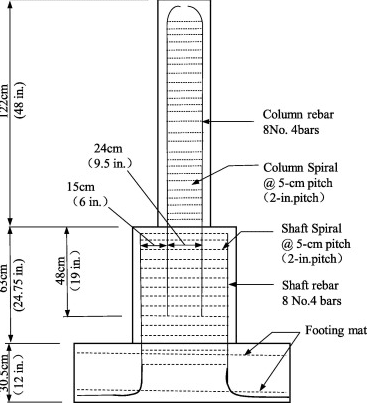ajk1
Structural
- Apr 22, 2011
- 1,791
If the column face of a column above a floor is set back > 75 mm (3") from the column face of the column immediately below, and vertical dowels are used to lap with the vertical bars in the column, these dowels will be separated from the vertical bars in the column below by > 75 mm (3").
► Questions:
1. Is there any Code requirement on how close the bars in a compression lap splice must be, in order for the Code expressions for compression lap lengths to be valid?
2. If so, what happens if that limit is exceeded? How long a lap length would you use in that case?
I ask this questions as part of my review and revising/updating of all our typical details, and not in reference to any specific project.
The Standard to which I refer is CSA A23.3-2014, but I would be interested in what other Standards such as, but not limited to, ACI-318 and the Australian Standard.




